The catalogue of layouts vying for a place within Australia’s top ten golf courses just got more crowded.
Ocean Dunes is the realisation of Graeme Grant’s long-held dream. He has scoured the Australian coastline looking for a suitable site on which to bring his design ideas to life. After years of searching, he extended his view beyond the mainland, and considered the rugged, isolated shores of King Island.
Grant’s pedigree as a grass man is well recognised. Having worked alongside Claude Crockford at Royal Melbourne, he later held the head super role at Kingston Heath for many years. He was integral to the course improvements at The Heath (not just agronomy but green complex reconfiguration and construction), and oversaw presentation of the course for many professional tournaments, including the Australian Open. During this time Graeme was a principal at Newton Grant & Spencer, clocking up many years at the coalface of the course design and construction industry.
Graeme has been battling the elements on the west coast of King Island for more than two years, steadily toiling and breathing life into his vision. His own design, on a stunning coastal site, is nearly complete. His experiences would be a wonderful read should they ever form the focus of a forum feature interview.
King Island is home to under 2000 people. The island sits in Bass Strait, between the Australian mainland, and the north-west coast of Tasmania. Small planes take 40 or so minutes to fly from Melbourne to the island. Beef and dairy farming, wonderful cheese, and crayfish have been the strong suit of the island - until now. Golf on King Island is soon to be up in lights.King Island boasts two mains towns - Currie (the larger of the two) and Grassy. Ocean Dunes Golf Course is located a few minutes by car from King Island airport, and the main street of Currie. 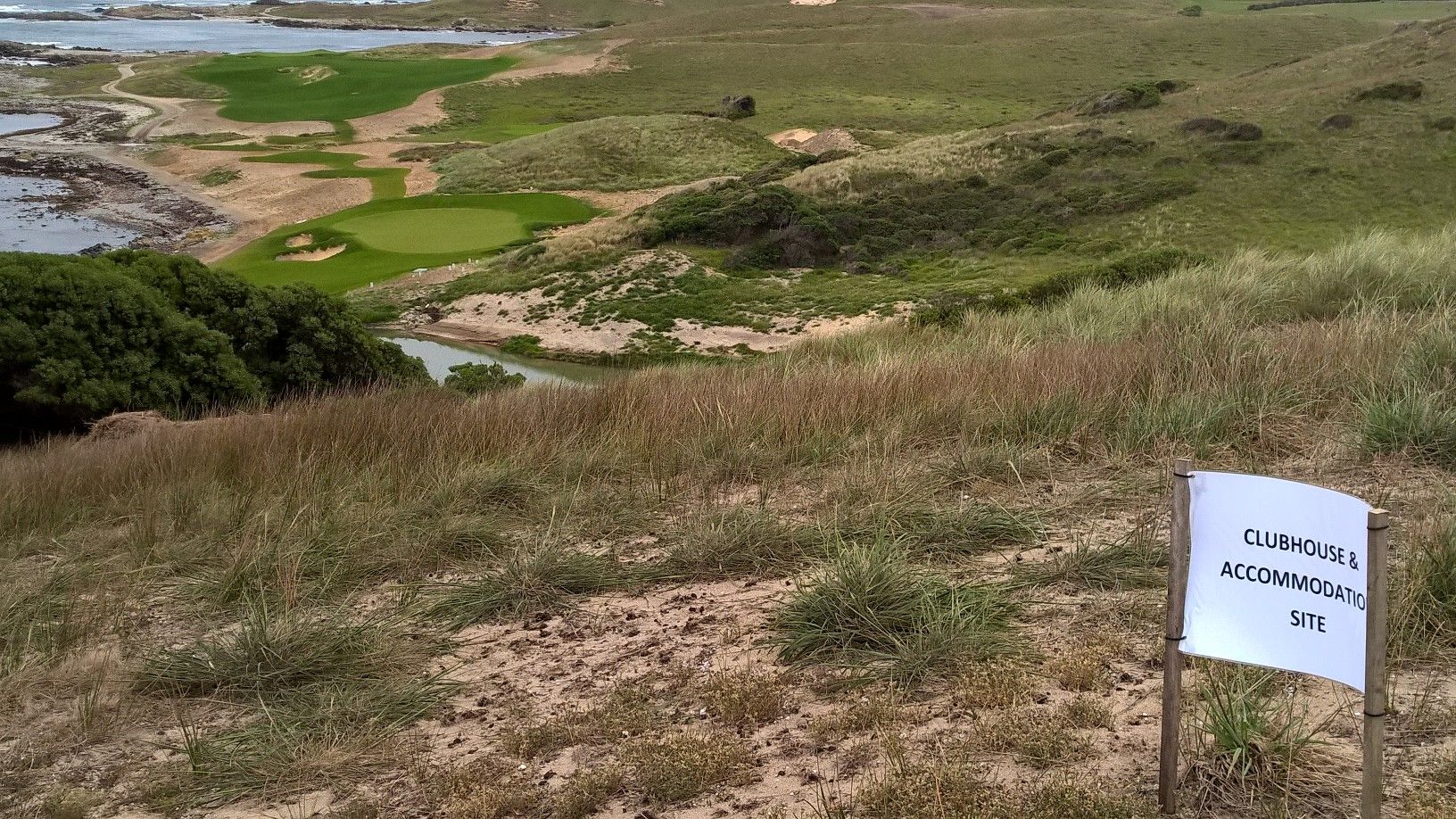
There is no accommodation on course at this time, yet the owners of Ocean Dunes have purchased the pub in Currie, where beers, wine, and wonderful King Island beef are served. More than a dozen recently refurbished rooms await tired golfers.
The course at Ocean Dunes occupies a glorious plot - undulating, dramatic and right on the shore. It has been routed to maximise proximity to the crashing waves, to take in many sizeable dunes on the property, and provides many thrilling shots. The fairway grasses (fescue) and greens (bent) are a delight, and up to Graeme’s high standards. The native vegetation provides a wonderful contrast, and most likely exceeds the expectation anyone may have reasonably held pre-visit, with a wonderful raw natural beauty, and many different colours and textures.
There’s the belief among one or two judges that the collection of holes making up the back nine may be better than those on the front side of the course, which is a very exciting prospect. Many of these holes are grassed, while one or two were near final construction tweaks at the time of my visit.
And with that – let’s get into a simple pictorial review of those holes already in play.
A copy of the card of the course –
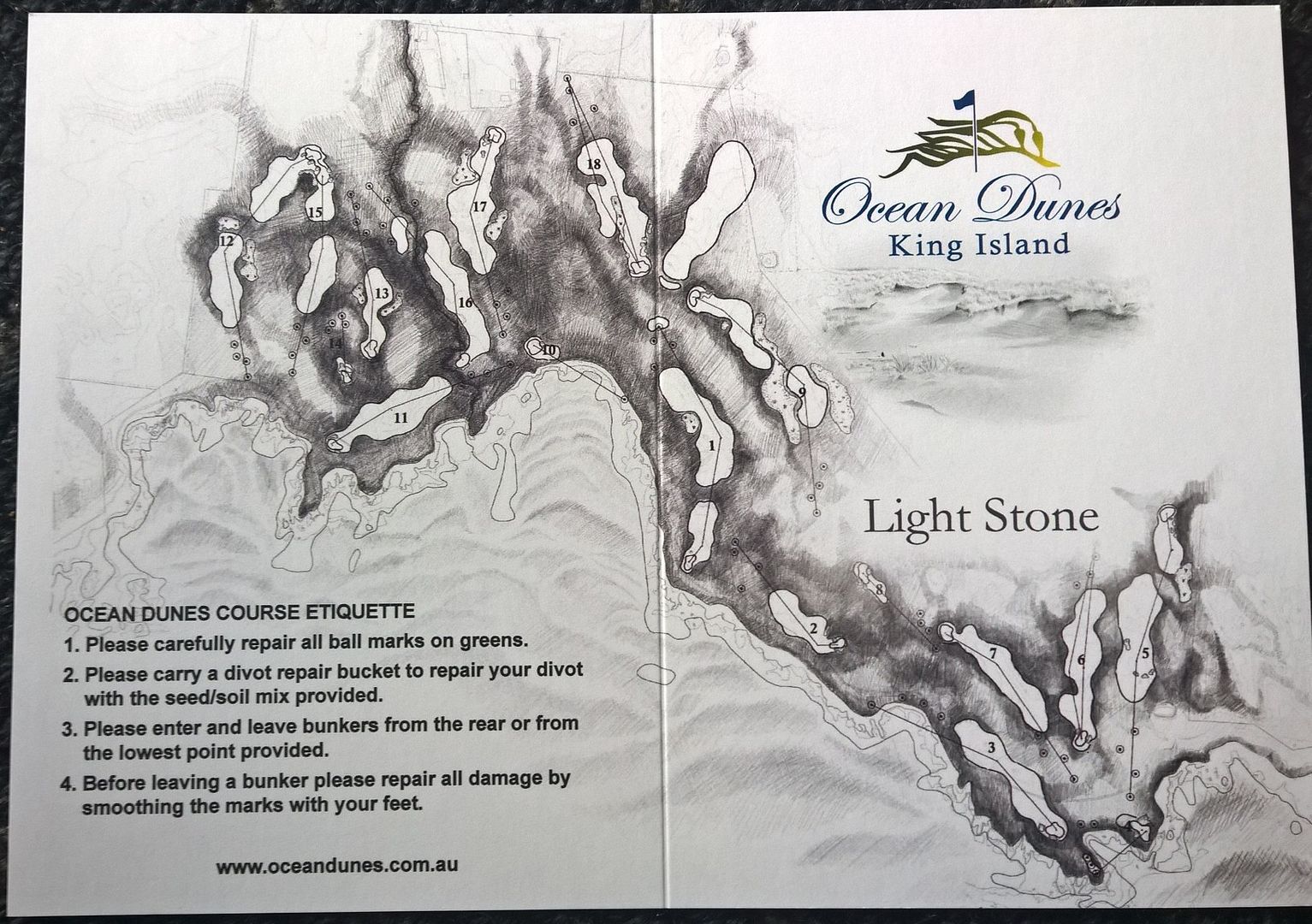
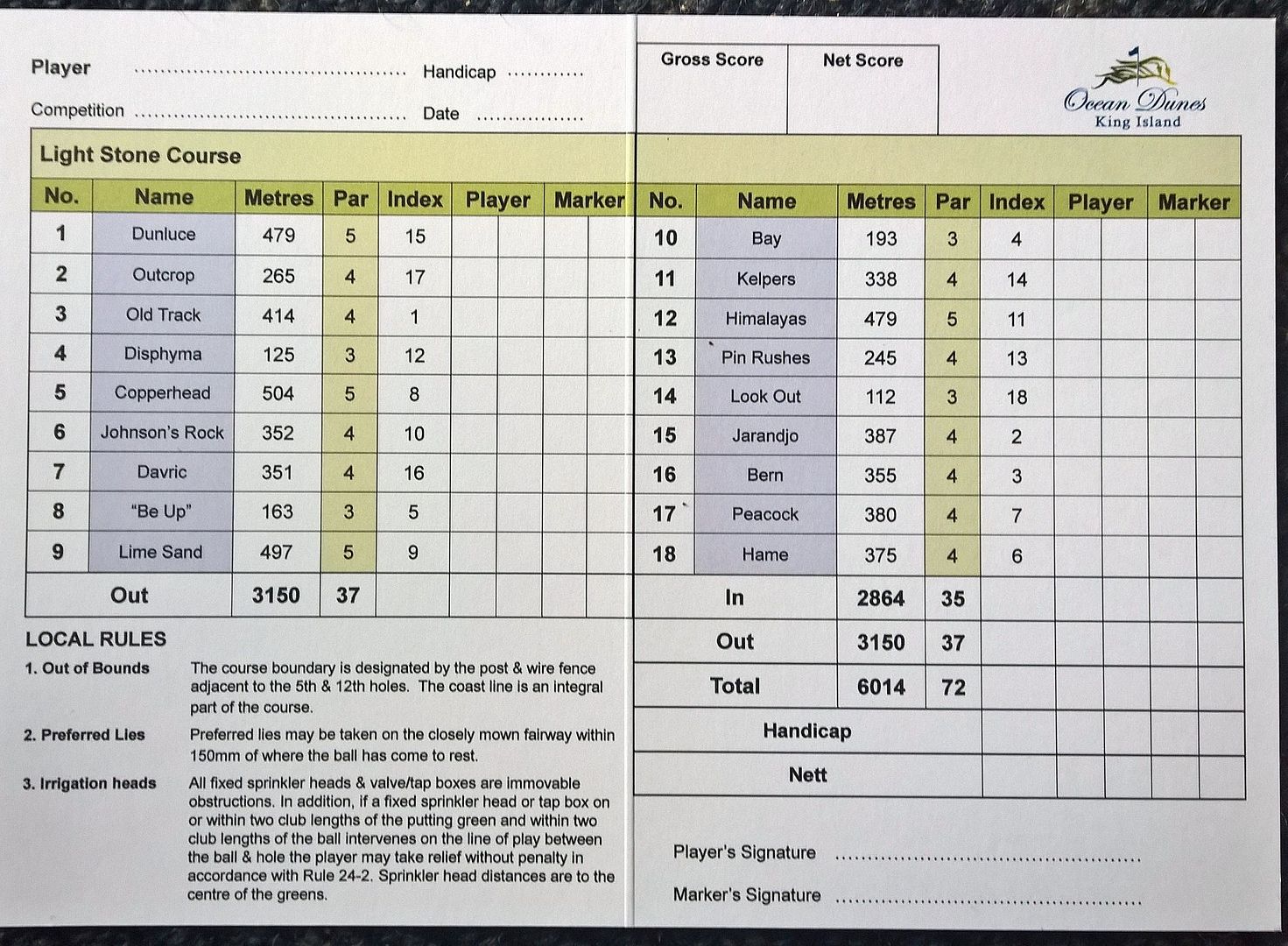
1
st hole, Par 5, 479m
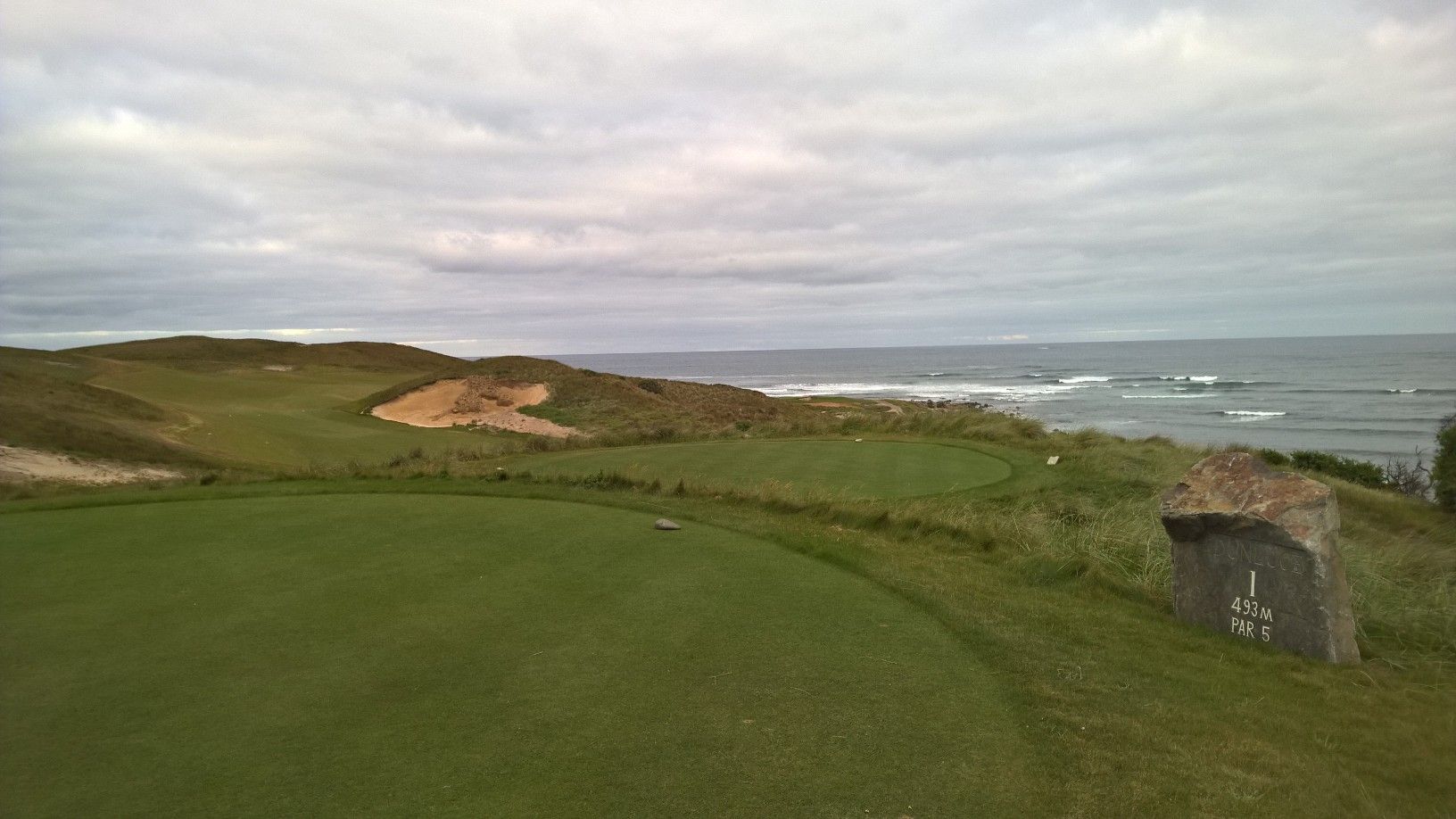
The first tee is set beside a large, undulating bent grass practice putting green. Views of the shore are stunning, and are equally grand from the future clubhouse site, which is a lag putt distance away. The opening hole is a par 5, and plays around a massive solitary bunker cut into a vast dune on the right of the hole. The green is visible off to the right of this, down on the shore line.
The play seems to be to stick left all the way along the hole, which is a little counter-intuitive to me. Keeping well left of the drive bunker yields this look.
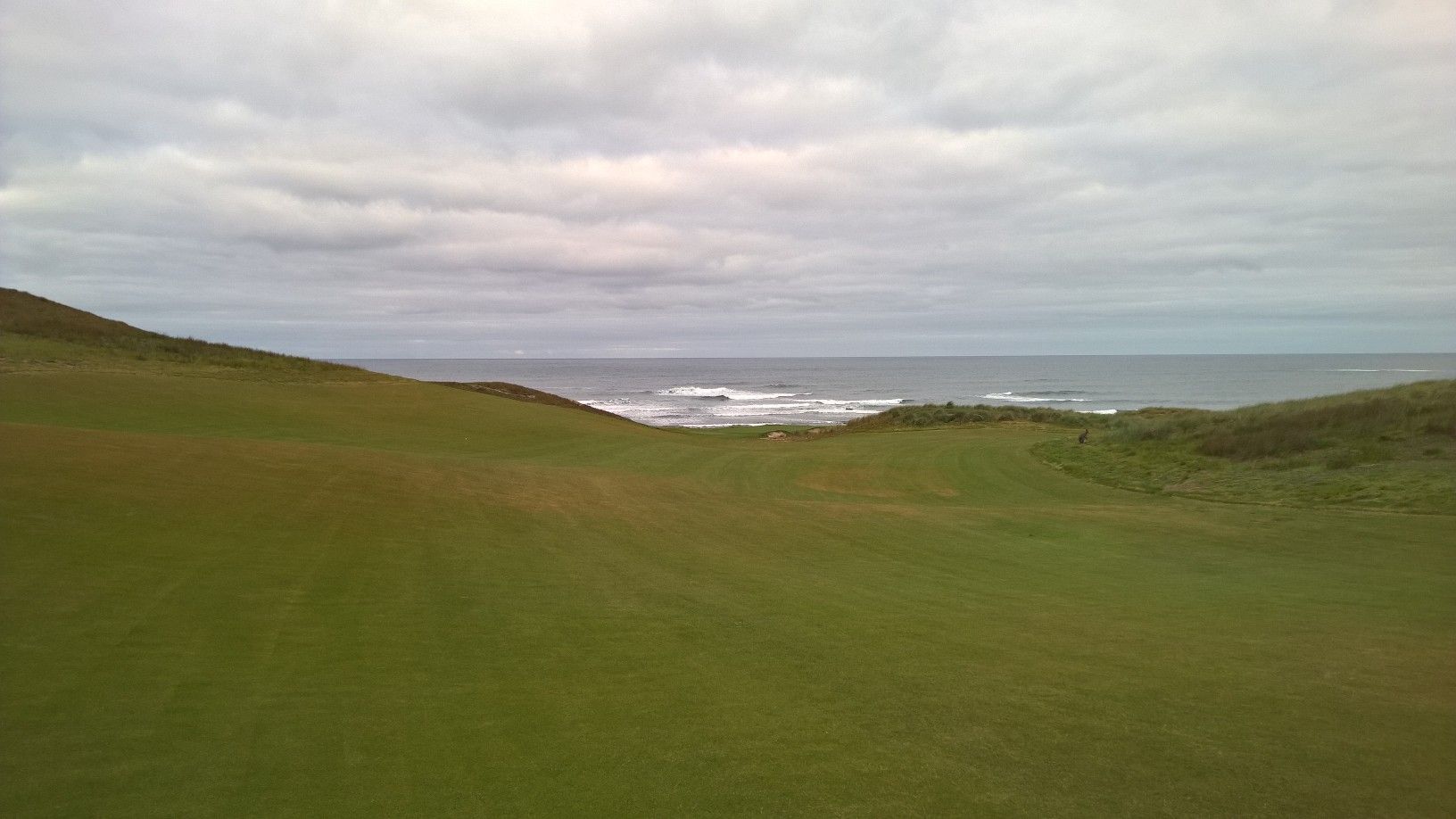
Nearing the hazard, and sneaking round the bunker’s edge yields this looks for the second.
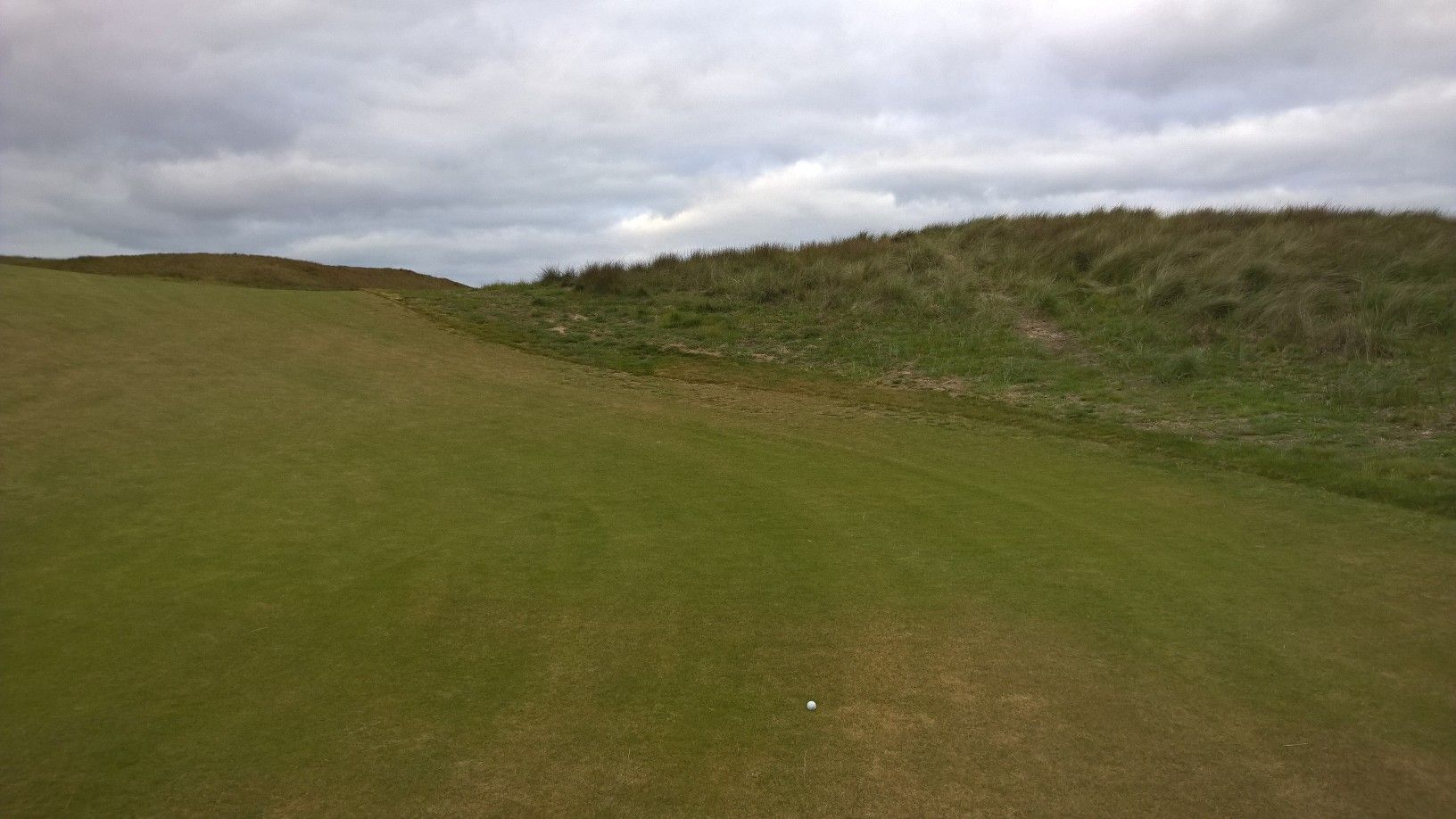
The green seems receptive to a ball fed in from the left, and is hard to approach from the right.
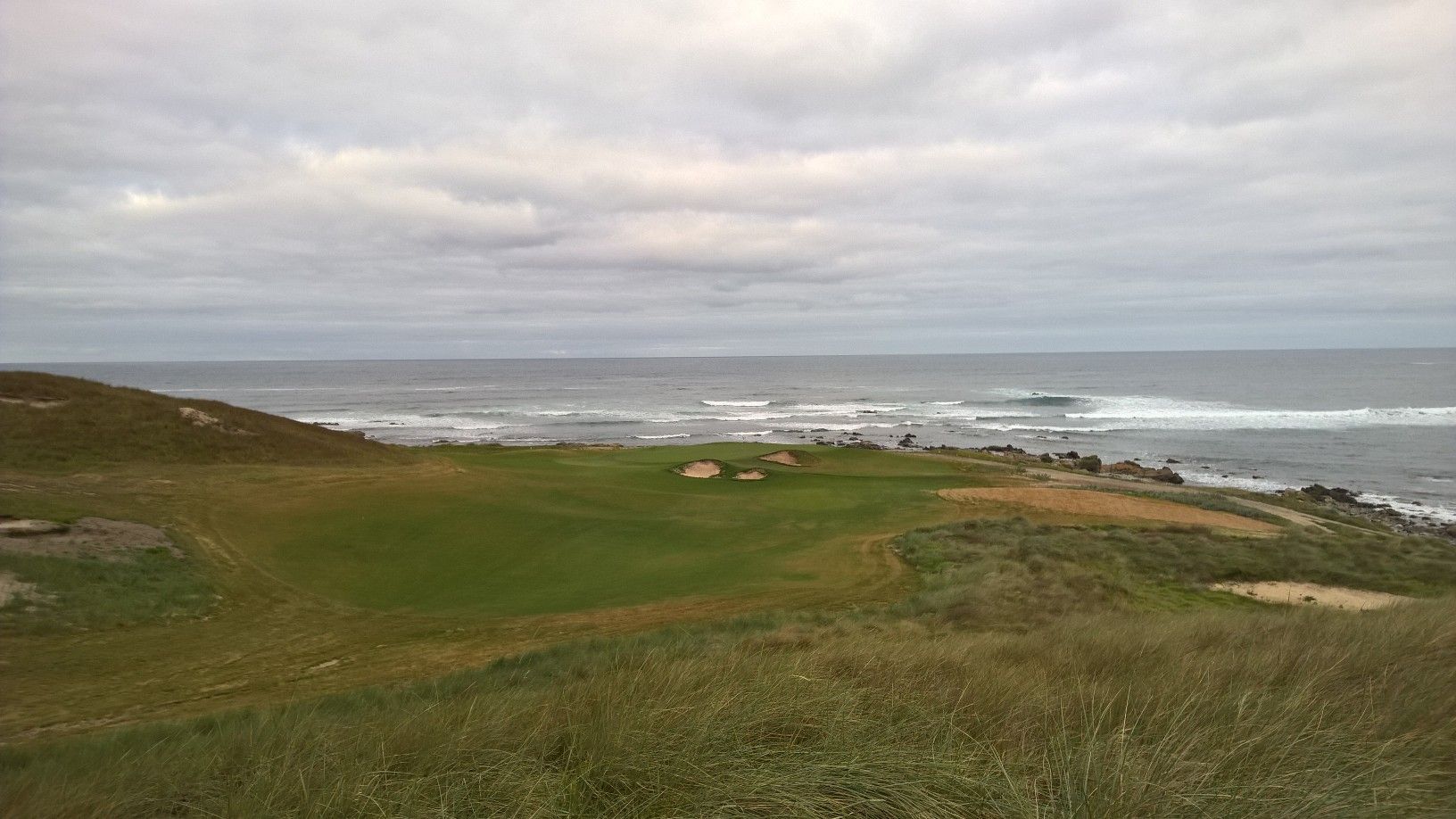
The walk to the shoreline has not taken long at all, and there it stays for several holes.
2
nd hole, Par 4, 265
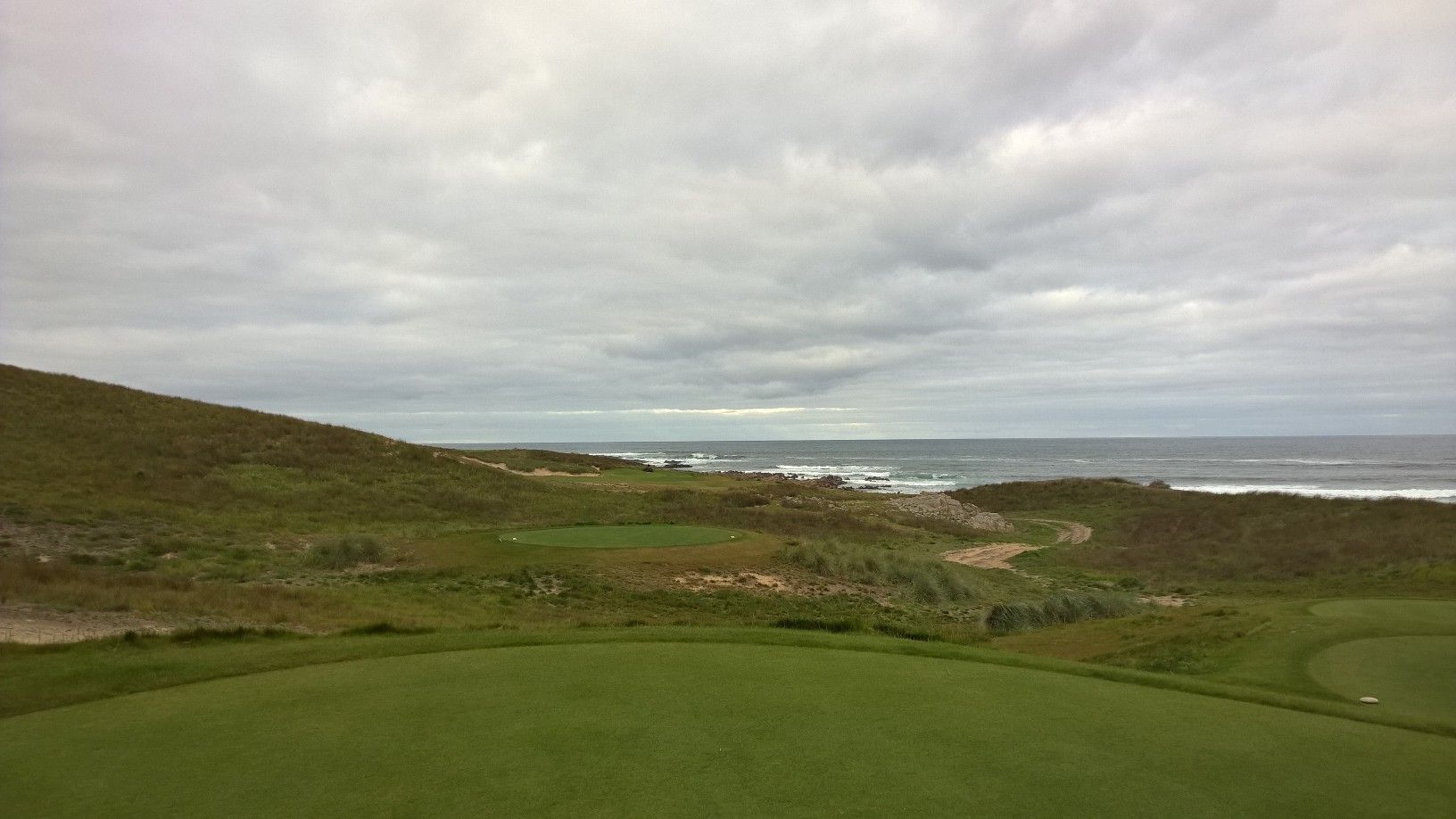
A really cool short four, with ample fairway width, and a secluded green, which lies beyond a small dune, into which several bunkers have been cut. The best approach angle is from the far right edge of the fairway. Those who elect to play their tee shot safely away from the water ensure a more difficult second shot. Flirt with the shore and approach play is far easier.
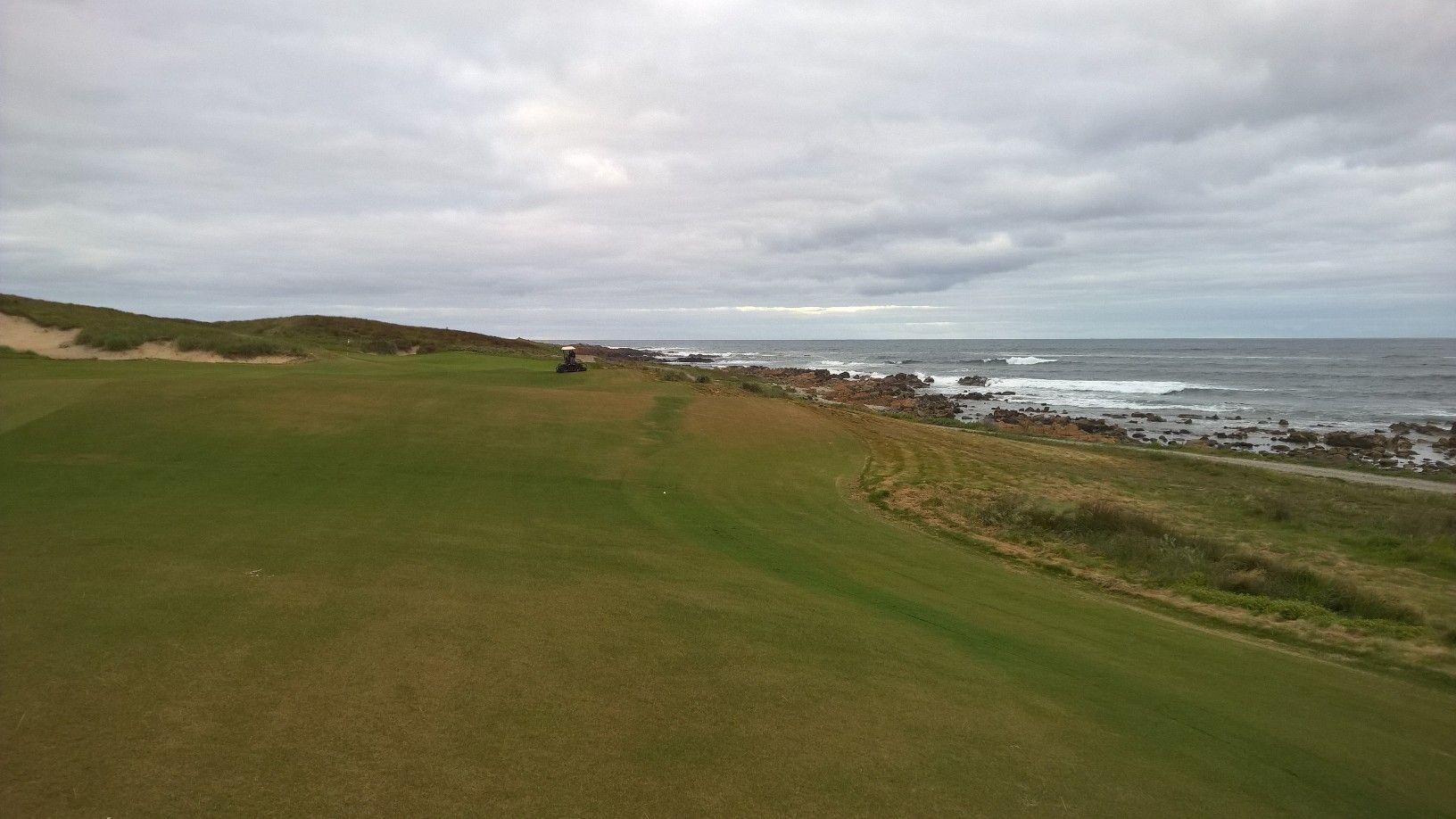
And from the left, the approach looks like this
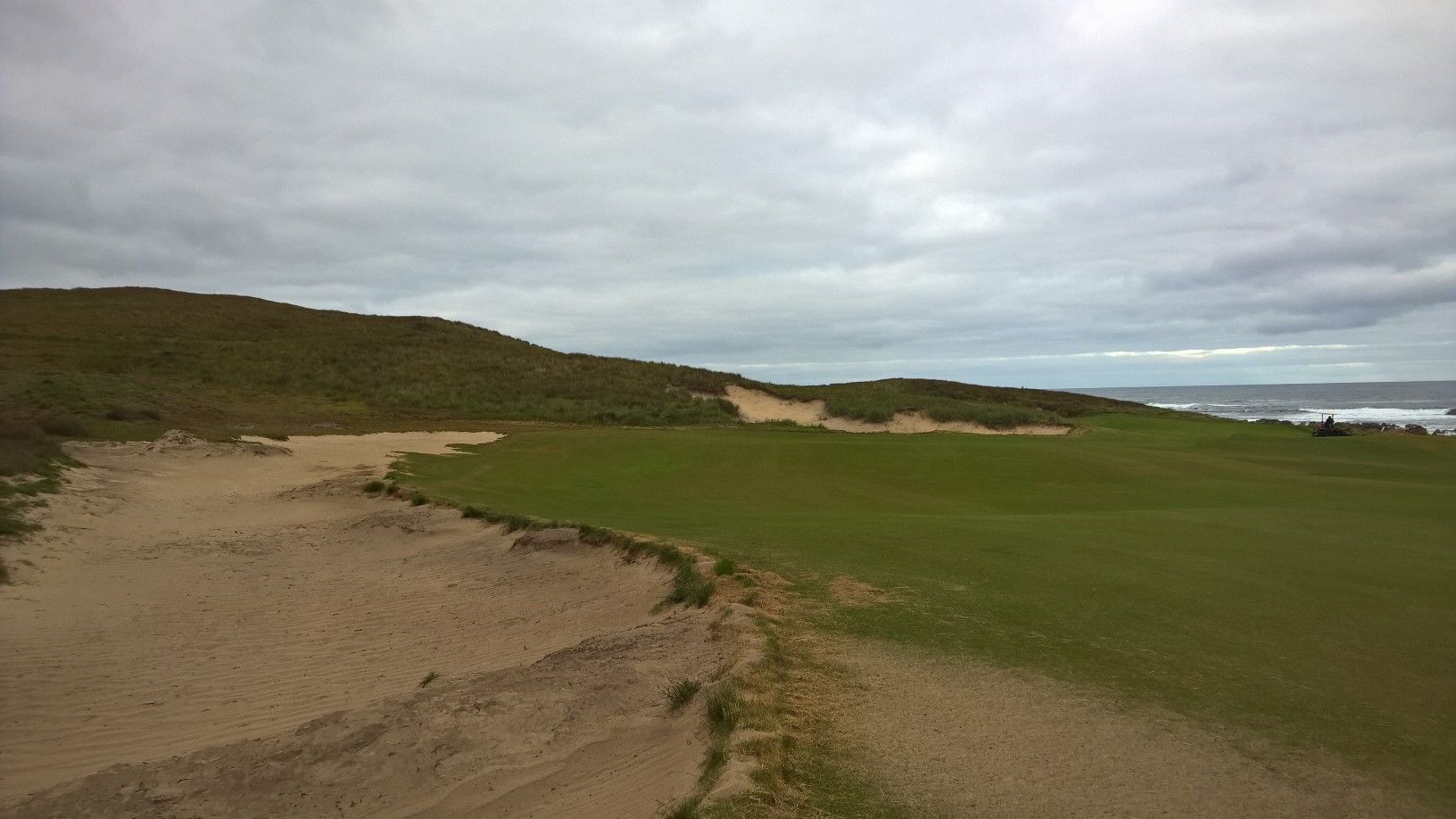
The second green is interestingly contoured and shaped, and it pays to take a peek over the dune prior to playing the approach. The image below is taken from the back left portion of the green, looking down the putting surface, with the fairway off to the right.
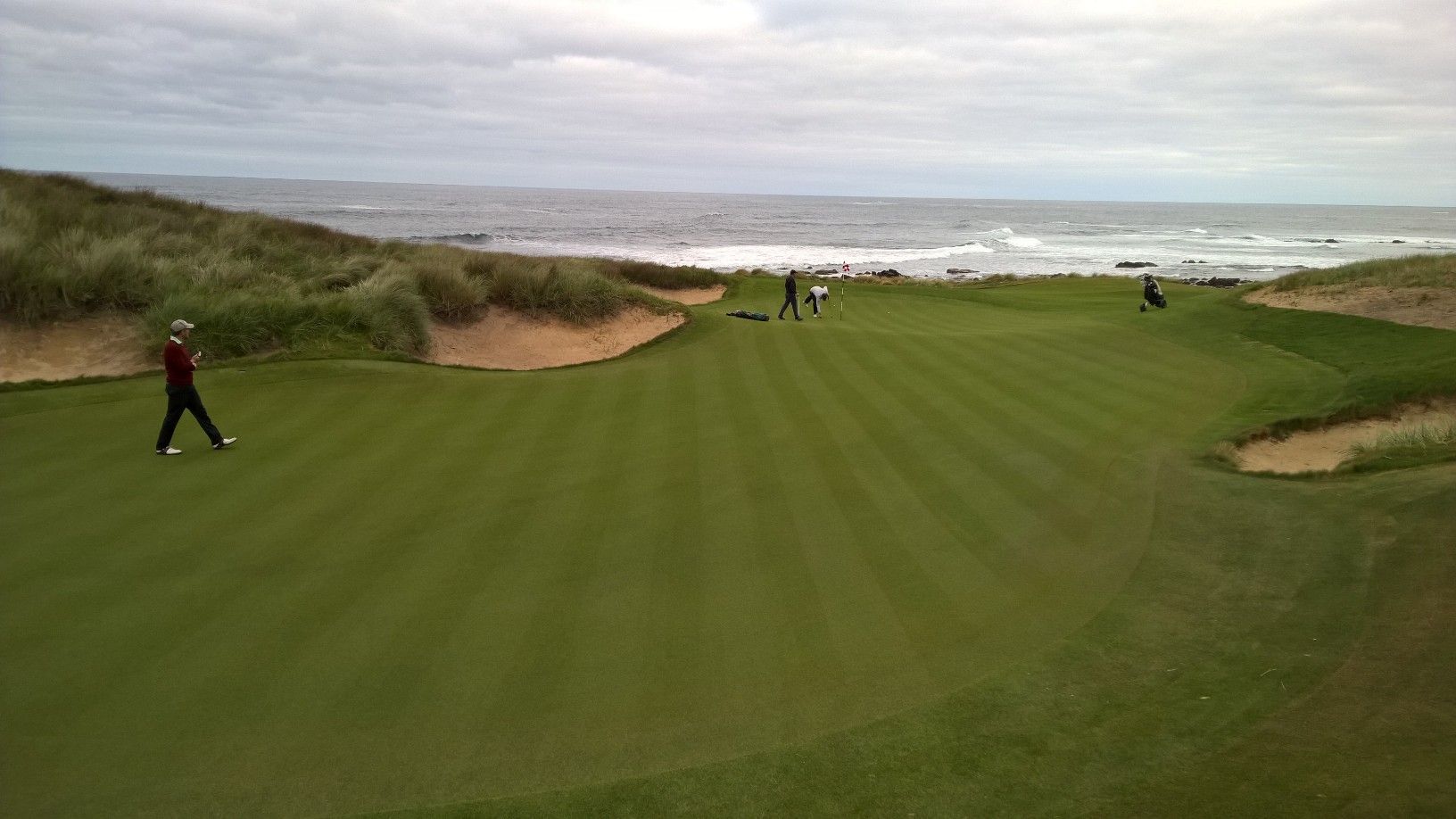
3
rd hole, Par 4, 414m
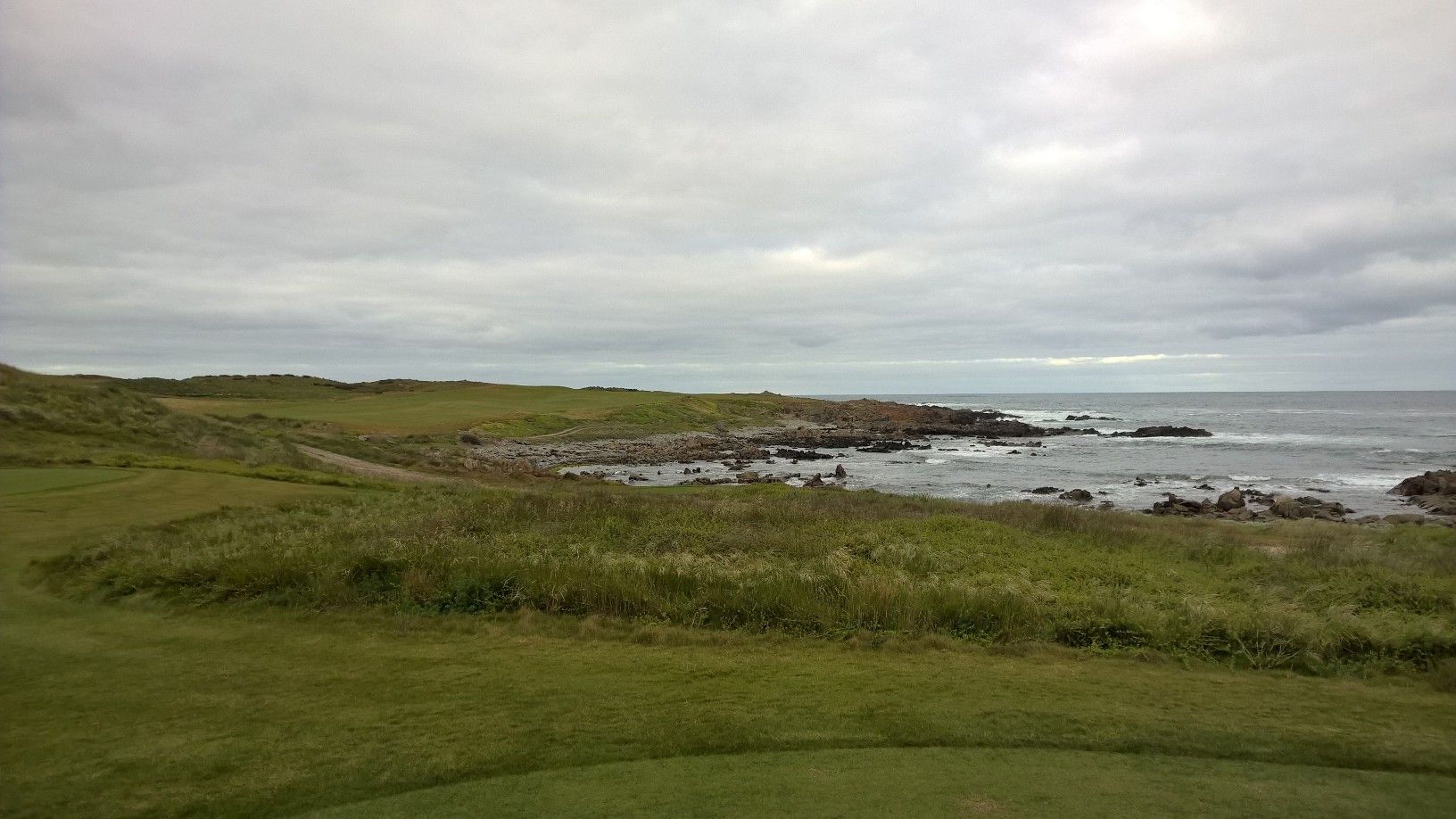
A long four, with a thrilling drive. Those playing left, opting for the safety of a modest carry, almost certainly render the green unreachable, as this view demonstrates.
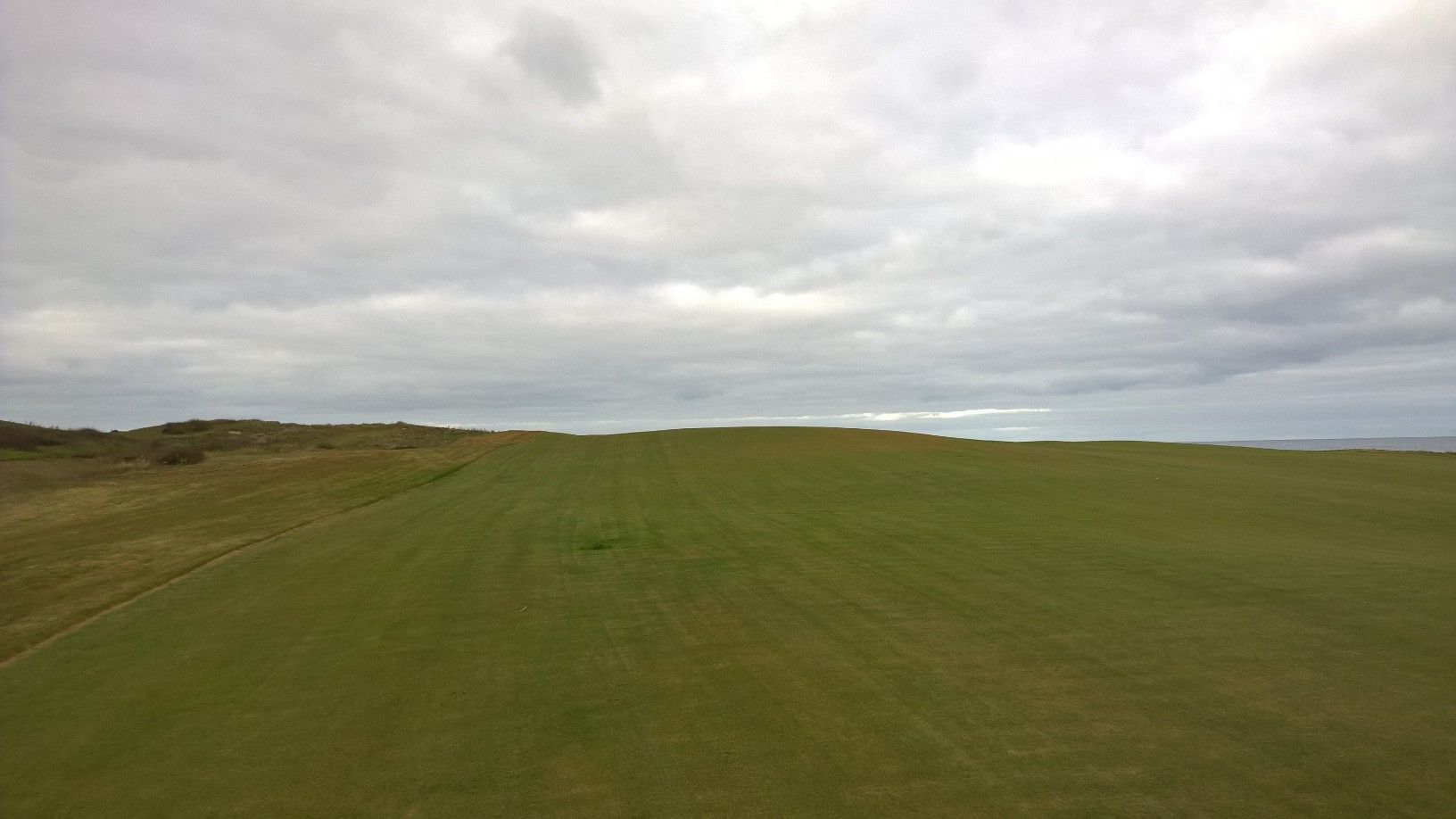
Drives can be played further right, and closer to the rocks and waves, to bring the green into much closer range.
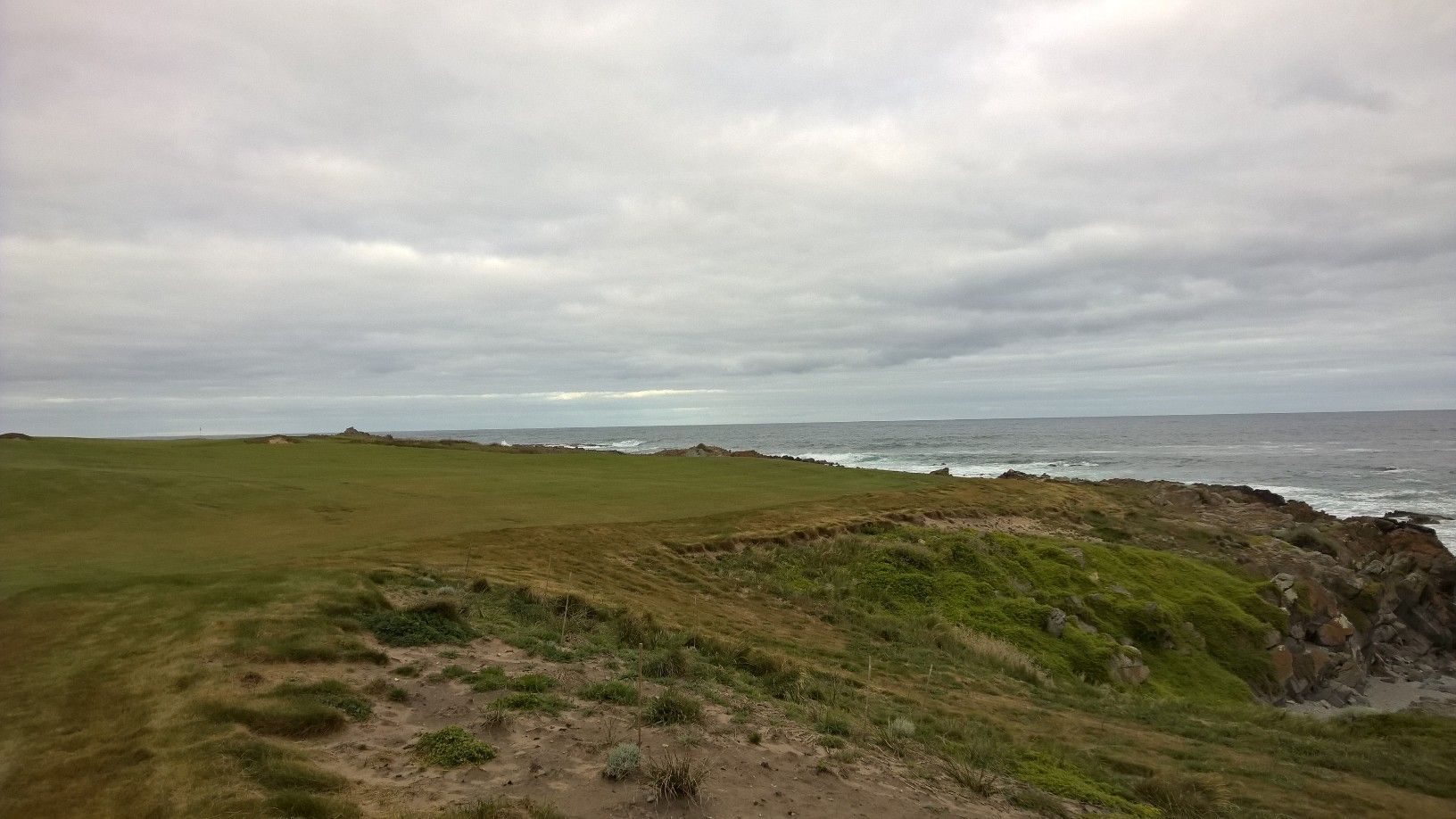
The putting surface is deceptively large, gently undulating, and occupies a wonderfully dramatic site. Waves crash into the rocks right next to the green, as they do at Pebble Beach’s iconic 7
th. King Island’s shore line is more rugged and wild, with vegetation, craggy rocks, wind and skies all imbuing a sense of isolation, escapism, and natural beauty.
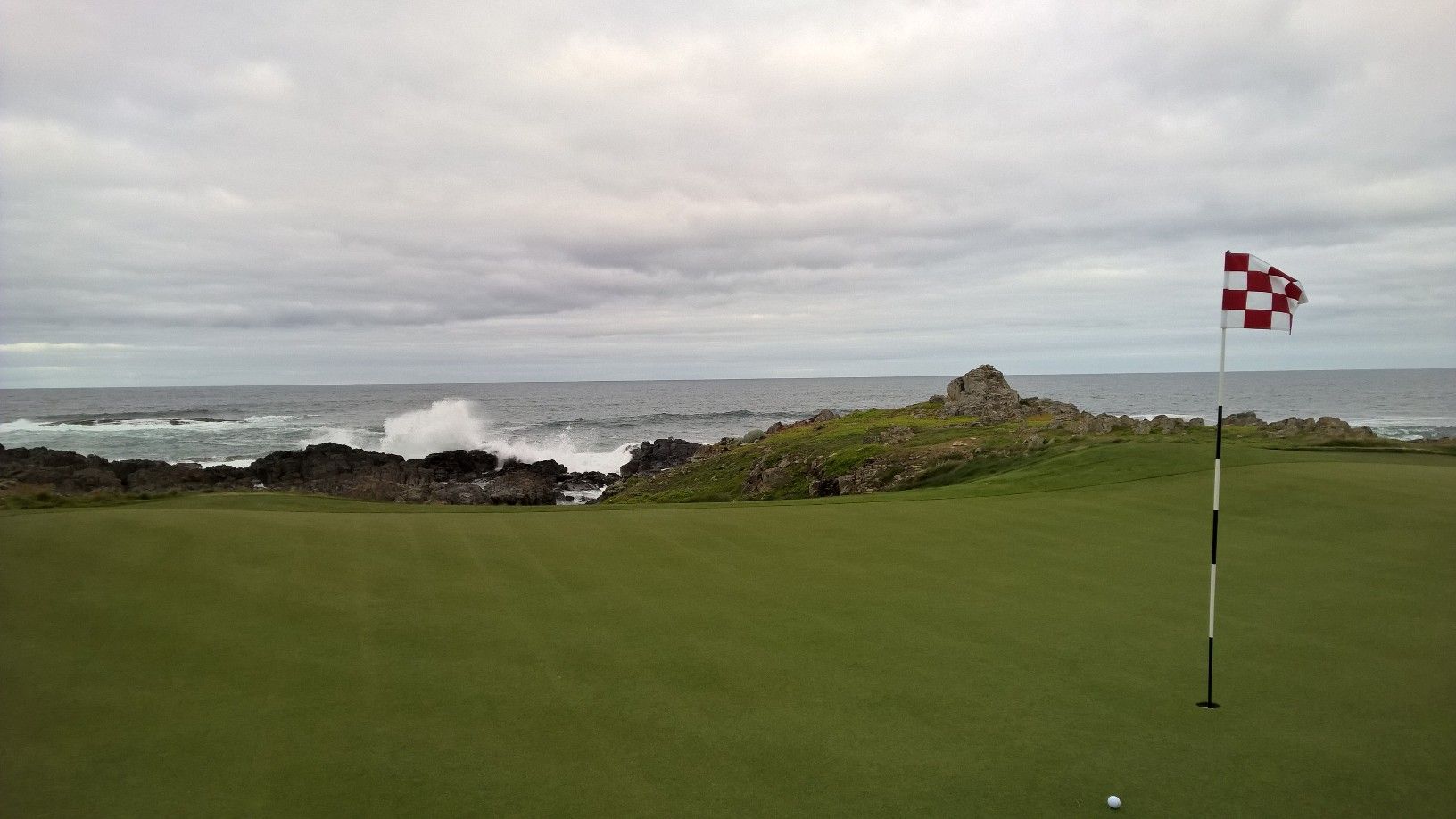
A view of the third fairway and green from the elevated 8
th tee.

4
th hole, Par 3, 125m
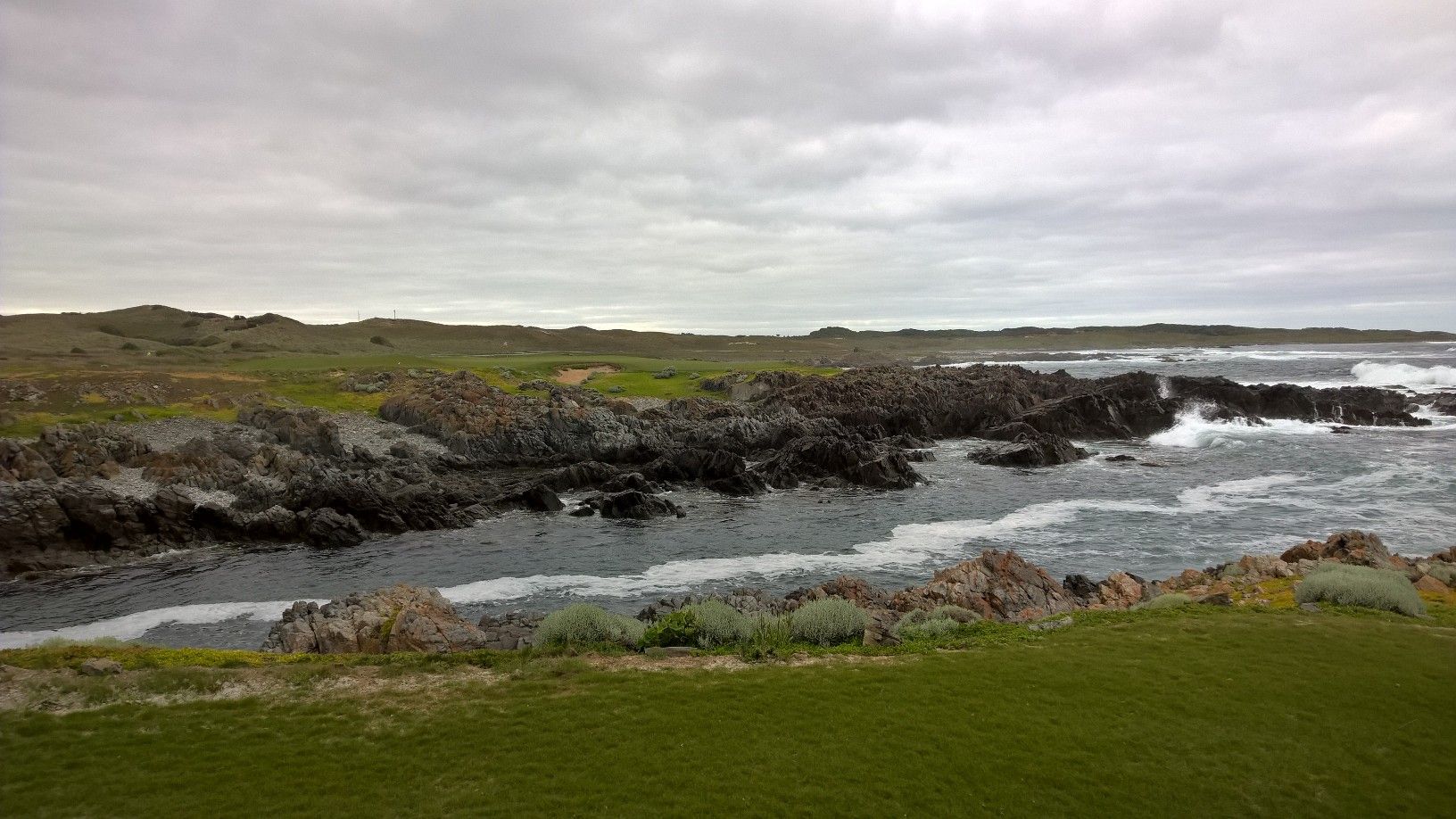
I’d eagerly anticipated seeing this hole, from the time I first saw a route plan for the course more than a year ago. “Mini Cypress Point 16
th” was the vibe, and while obviously different to the 16
th at CPC, I was not disappointed. Playing shorter, the location is superb, and the drama is high. The tee shot flies over a tiny inlet, and the rocks of King Island’s coast line - it is an exhilarating golf hole. The green is more intricately shaped than first appearances from the tee suggest too, which adds to the fun, interest and challenge after the tee shot has been struck.
